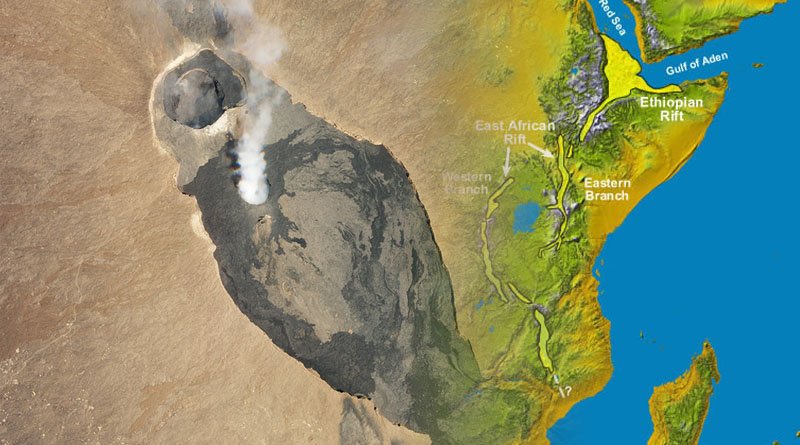The tectonic plates that make up Africa’s surface can pull apart or collide, forming vast basins and mountains. The question is if and when Africa will completely fall apart.

The second-largest continent, Africa, is gradually being torn apart by a vast rift. According to the Geological Society of London, this depression, also known as the East African Rift, is a network of valleys that stretches 2,175 miles (3,500 kilometres) from the Red Sea to Mozambique.
The tectonic plates that make up Africa’s surface can pull apart or collide, forming vast basins and mountains. The question is if and when Africa will completely fall apart.
According to NASA’s Earth Observatory, the older, larger Nubian tectonic plate is pulling the smaller, younger Somalian tectonic plate eastward along this massive rift in eastern Africa. (The Somalian plate and the Nubian plate are both occasionally referred to as the African plate and the Somali plate, respectively.)
The East African Rift started to form between Arabia and the Horn of Africa in the eastern part of the continent about 35 million years ago, according to Cynthia Ebinger, professor emerita of geology at Tulane University in New Orleans and scientific advisor to the U.S. State Department’s Bureau of African Affairs. This rifting had already reached northern Kenya by 25 million years ago through time and movement.
The eastern rift, which runs through Ethiopia and Kenya, and the western rift, which extends from Uganda to Malawi, are two parallel fractures in the crust of the Earth.
While the western branch is close to the Congolese rainforest, the eastern branch is dry. Africa is slowly opening up at a rate of over 0.25 inches per year, according to the discovery of offshore earthquake and volcano zones.
The rate of the rifting at this time is comparable to how quickly one’s toenails grow, according to Ken Macdonald, a renowned professor emeritus of Earth science at the University of California, Santa Barbara.
It is thought that heat from the asthenosphere between Kenya and Ethiopia caused the East African Rift to form. The continental rock was stretched and fractured as a result of the heat’s expansion of the crust.
The highest mountain in Africa, Mount Kilimanjaro, was created as a result of volcanic activity. A sea could form between the Somalian plate and the rest of the continent if Africa were to split apart, among other possible outcomes.
Ebinger stated that,” this new landmass would encompass Somalia, Eritrea, Djibouti, the eastern regions of Ethiopia, Kenya, Tanzania, and Mozambique. Ebinger noted that “another scenario has only eastern Tanzania and Mozambique separating.”
If Africa does fragment, “the rift in Ethiopia and Kenya may split to create a Somali plate in the next 1 million to 5 million years,” claims Ebinger.
Africa might not split in two, though. According to Ebinger, the geological forces causing the rifting may be too slow to completely separate the Somalian and Nubian plates.
According to a 2022 review in the journal GSA Today, the Midcontinent Rift, which curves for about 1,900 miles (3,000 km) across the Upper Midwest of North America, is one notable instance of a failed rift elsewhere on the planet.
Worldwide, continental landmasses are marked by failed rifts, according to Ebinger.
The Geological Society of London claims that the East African Rift’s eastern branch is a failed rift. The western branch is nonetheless still in operation.
What is unknown, according to Macdonald, is whether the Red Sea will eventually become accessible, followed by something much larger, such as a smaller version of the Atlantic Ocean, if the rifting keeps moving at its current rate. “Or perhaps it accelerates and arrives sooner? Or maybe it would stop?”